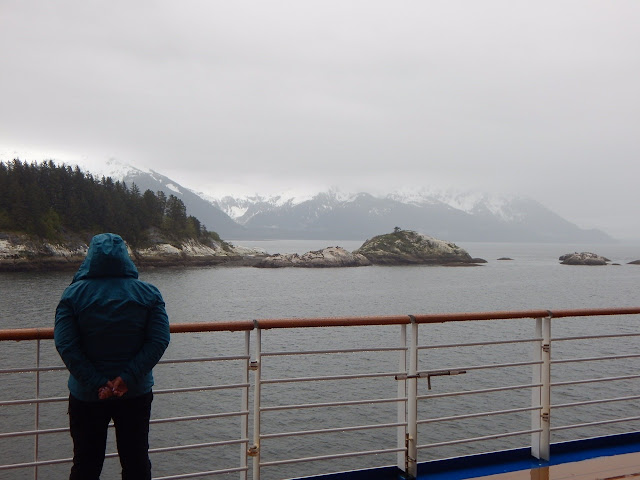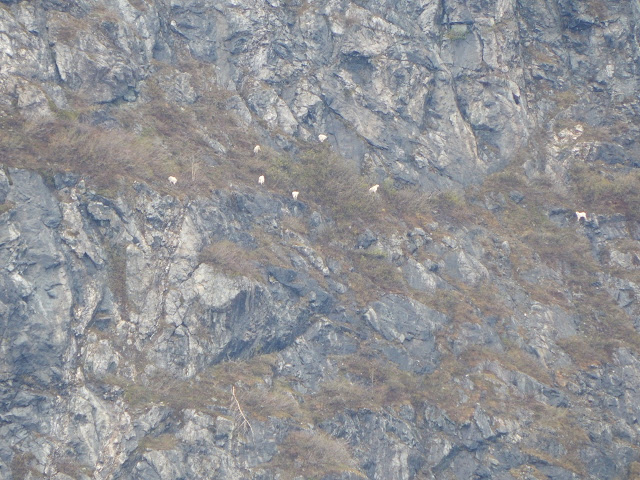Skagway, AK
After an early manicure, I left the ship for a walk around Skagway, pop. 1,191. This area was originally inhabited by the Tlingit. One explanation of the name says it is derived from skagua, meaning “place where the north wind blows.”
When gold was discovered in the Klondike in 1896, it set off a gold rush. Boatloads of miners began arriving in Skagway to make the difficult trek inland to the Yukon. By 1898, Skagway was the largest city in Alaska.
These days, boatloads of tourists arrive in Skagway to soak up the Gold Rush history and ride the White Pass & Yukon Route railway. On the day we arrived, there were four ships in port, bringing the population up above 10,000 for the day.
The downtown area is included in a historic preservation district. The building facades maintain their gold rush era appearance, if not their use.
The Golden North Hotel is said to be haunted. I once spent the night there.
 |
| Elinor Dusenbury composed the music that would become “Alaska’s Flag Song” on this very piano. |
 |
 |
This building was first used by McCabe College, from 1899-1901. It was a U.S. Courthouse, Marshall’s Office, and jail from 1901-1956. Since 1961 it has served as City Hall and the Skagway Museum. |
It was a crisp, sunny day, and we managed to walk 10 km. By the time we got back to our ship, we were looking forward to dinner at Bistro sur la Mer. It was great — until the Perfume Ladies showed up. We could smell them before we saw them; two old ladies, drenched in old-lady perfume. Of course they were given seats right behind me. OMG.
After dinner we got to see a solo show by that gifted young soprano, Alea Vernon. We found out she is only 21. Oh, my. She has so much talent.
Finally, we headed up to the conservatory on the top deck to watch the sail-away. It’s not dark yet at 10 pm. We watched flocks of some kind of seabirds making furrows in the water as they landed. So much beauty!💜









































